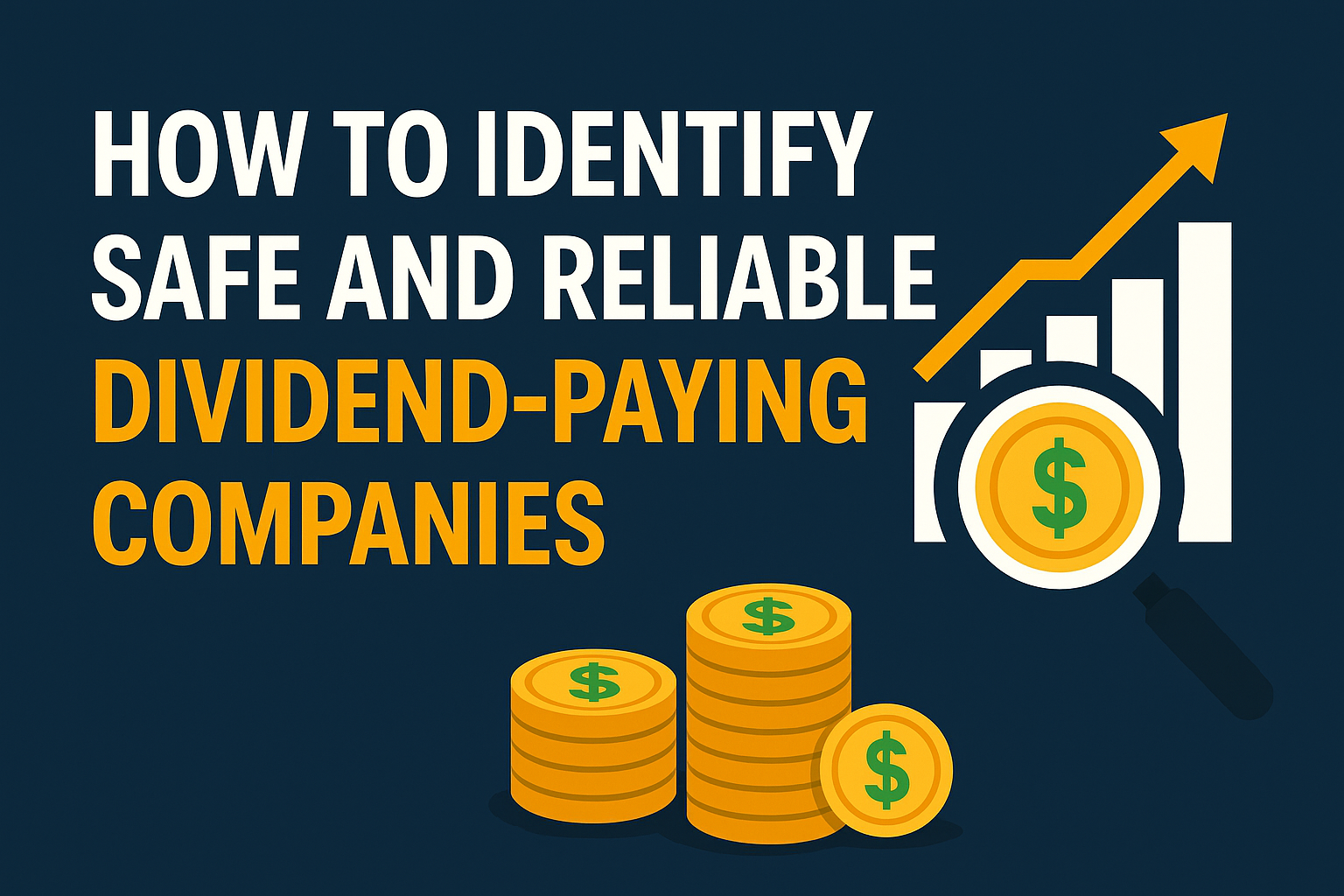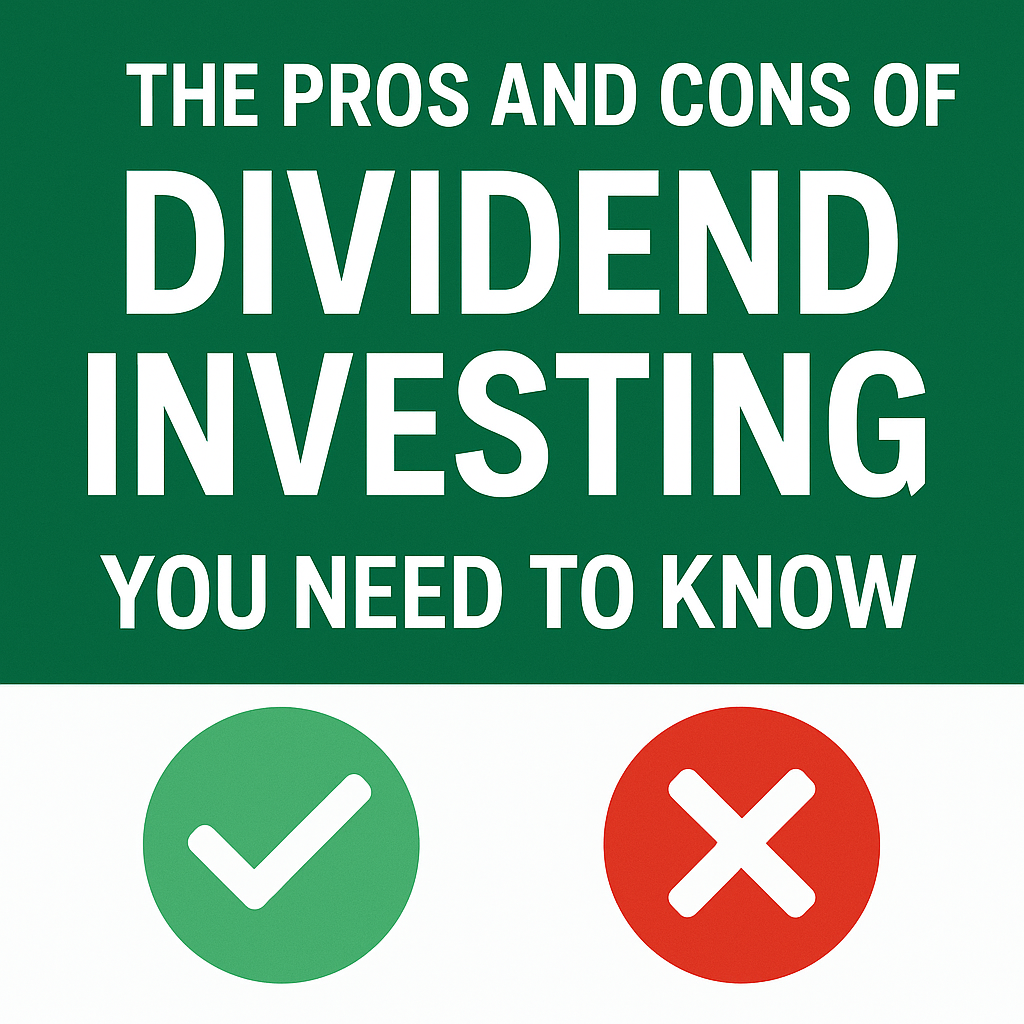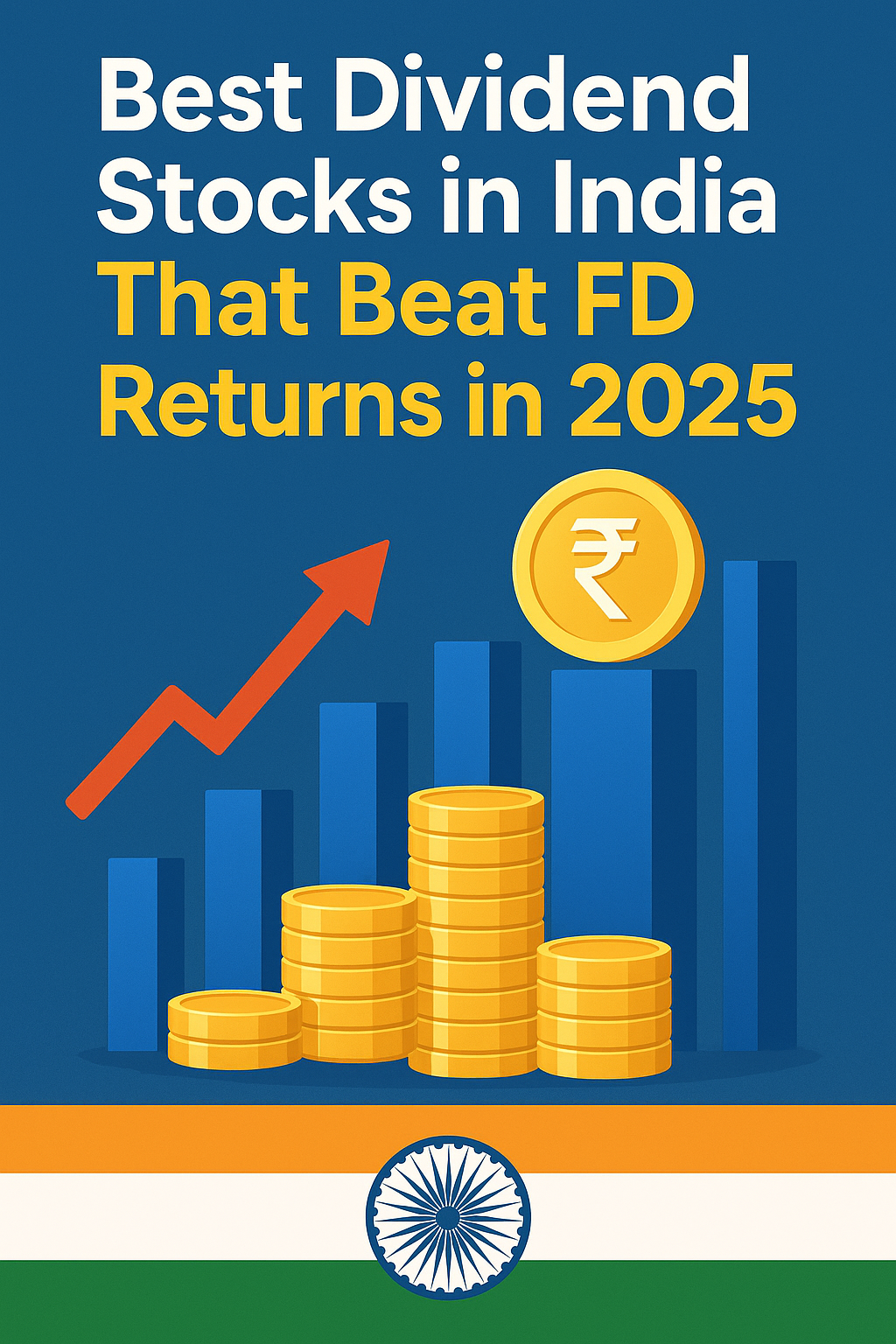Table of Contents
Learn how to identify safe and reliable dividend-paying companies with this in-depth guide. Discover key metrics, red flags, and long-term strategies for smart income investing.
For income-focused investors, dividend-paying stocks are like golden geese—they provide consistent cash flow and the potential for long-term growth. But not all dividend stocks are created equal. Some companies may promise high yields but fail to sustain payouts, leaving investors disappointed. This raises the vital question: How to identify safe and reliable dividend-paying companies?
In this comprehensive guide, we break down the key indicators, metrics, and red flags to help you build a dependable dividend portfolio that stands the test of time.
Dividend investing is a popular strategy for generating passive income and building long-term wealth. But not all dividend-paying companies are equal. Knowing how to identify safe and reliable dividend-paying companies is key to avoiding risk and maximizing returns.
Start by examining dividend history. Companies that have consistently paid—and increased—dividends over 10, 25, or even 50 years (like Dividend Aristocrats and Dividend Kings) offer strong reliability. These firms typically have stable earnings and proven business models.
Next, assess the company’s payout ratio—the percentage of earnings paid as dividends. A sustainable payout ratio (typically below 60%) indicates room for growth and less risk of cuts. Also review free cash flow, which shows whether the business can afford its dividends after operational expenses.
Check financial health by analyzing debt levels and earnings stability. A strong balance sheet and low debt-to-equity ratio are signs of a solid company. Additionally, focus on businesses with a competitive moat—advantages that protect them from competitors, such as strong branding or market leadership.
Avoid “high-yield traps.” A dividend yield that looks too good to be true often is. It can indicate trouble, such as falling stock prices or unsustainable payouts.
Finally, use tools like Dividend.com or Simply Safe Dividends to validate your research and monitor safety scores.
1. Understand the Basics of Dividend Investing
Before diving into technicals, let’s clarify what makes a stock a good dividend investment.
- Dividend Yield: This is the annual dividend divided by the stock price. While a high yield may seem attractive, it can also be a sign of risk.
- Payout Ratio: This measures what percentage of earnings is paid out as dividends. A sustainable payout ratio (typically below 60% for most industries) is a good sign.
- Dividend Growth: Companies that consistently grow their dividends year-over-year often have strong fundamentals.
Knowing how to identify safe and reliable dividend-paying companies starts with understanding these basics.
2. Look for a Strong Dividend History
Reliable dividend stocks have a long track record of paying—and increasing—dividends. Here are key metrics to watch:
- Dividend Aristocrats: These are S&P 500 companies that have increased dividends for at least 25 consecutive years.
- Dividend Kings: Companies with 50+ years of consecutive dividend growth.
- Consistency: Even if a company isn’t a Dividend King, a decade-long record of increasing dividends is a strong signal.
Example: Johnson & Johnson and Procter & Gamble have long histories of paying dividends, making them textbook examples of reliability.
3. Evaluate Financial Health and Stability
A company’s ability to pay dividends depends on its financial strength. Use these key financial indicators:
a. Free Cash Flow (FCF)
FCF is the cash left after operational and capital expenses. Companies that consistently generate strong FCF are more likely to maintain and grow dividends.
b. Debt Levels
High debt can jeopardize dividend payments, especially during downturns. Look for a debt-to-equity ratio that aligns with industry norms.
c. Earnings Stability
Companies with volatile earnings may struggle to sustain dividends. Look for firms with stable or steadily rising earnings per share (EPS).
4. Analyze the Dividend Payout Ratio
As mentioned earlier, the payout ratio is critical. A payout ratio that’s too high (e.g., 80% or more) may indicate that the company is stretching its finances to maintain dividends.
- General Rule: A payout ratio between 30% and 60% is considered healthy.
- Exception: Real Estate Investment Trusts (REITs) and Utilities often have higher payout ratios due to their business models.
Pro Tip: Don’t just look at one year—analyze payout ratios over 3–5 years for consistency.
5. Check for Competitive Advantages (Moats)
Companies with a durable competitive advantage—such as strong brand identity, network effects, or cost advantages—are more likely to generate stable earnings and sustain dividends.
Examples:
- Coca-Cola (brand moat)
- Microsoft (technology moat)
- Visa (network effect)
These moats help companies withstand economic downturns, preserving their ability to pay dividends.
6. Evaluate Management and Corporate Governance
A trustworthy management team focused on shareholder returns is essential.
- Dividend Policy: Check if the company prioritizes consistent dividends.
- Capital Allocation: Are they reinvesting wisely? Paying down debt? Buying back shares?
- Earnings Calls: Review quarterly transcripts or listen to earnings calls to gauge management’s tone and plans.
Tip: Companies with founder-led leadership often show strong long-term commitment to shareholder value.
7. Avoid High-Yield Traps
A dividend yield above 7% may look tempting, but it often signals underlying issues:
- Falling stock prices (inflated yield)
- Unsustainable payout ratios
- Declining earnings
Use caution when chasing yield. Focus instead on quality, consistency, and sustainability.
8. Check Dividend Coverage Ratio
This is another critical indicator. It tells you how well a company’s earnings can cover its dividend payments.
- Formula: Net Income ÷ Dividend Paid
- Ideal Range: Above 2 is considered safe.
If a company has a low coverage ratio, even a temporary earnings dip could lead to dividend cuts.
9. Look for Industry-Specific Strength
Some industries are more conducive to safe and reliable dividends:
| Sector | Characteristics |
|---|---|
| Utilities | Stable cash flow, regulated pricing |
| Consumer Staples | Consistent demand, strong brand loyalty |
| Healthcare | Inelastic demand, high margins |
| REITs | Legally required to pay 90% of income as dividends |
| Blue-Chip Tech | Cash-rich, low debt, growing dividend initiators |
Understanding the dynamics of each sector helps you better assess risk and reliability.
10. Use Dividend-Focused Tools and Resources
Modern investors have access to powerful tools to assess dividend reliability:
- Dividend.com – Dividend safety scores, growth history, and analyst opinions.
- Simply Safe Dividends – Provides safety ratings and portfolio tracking.
- Morningstar – Offers analyst ratings and financial health grades.
Leverage these tools to validate your research and enhance your decision-making process.
Conclusion: Build a Dividend Portfolio with Confidence
Mastering how to identify safe and reliable dividend-paying companies gives you the confidence to build a robust income-generating portfolio
Knowing how to identify safe and reliable dividend-paying companies is both a skill and a discipline. By focusing on financial strength, dividend consistency, and industry resilience, you can build a portfolio that delivers steady income and long-term growth.
Key Takeaways:
- Prioritize companies with long histories of dividend payments and growth.
- Analyze financial health using free cash flow, debt ratios, and payout metrics.
- Don’t fall for high-yield traps—focus on quality over quantity.
- Use reliable tools and stay updated with earnings and management guidance





